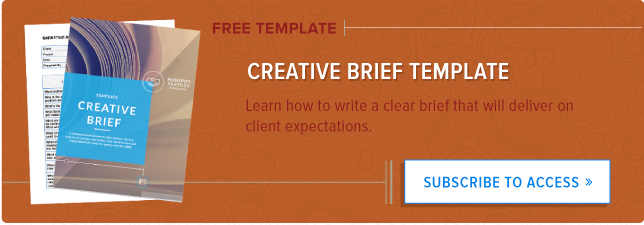Everyone's trying to manage their cash flow. But no matter how buttoned up you might be in your process, it still could mean clients pay late, which messes with your cash flow and stability.
Here are nine strategies to make sure your clients are ready and able to pay your agency's invoices on time:
1) Watch for Red Flag Clients
They always give themselves away, even if we decide to overlook the signs in the effort to get a new client signed. They're overly focused on price, or poorly organized. Or worse, they have a generally unpleasant attitude that's going to make working with them difficult.
These are the kinds of clients with a high likelihood of not paying on time. Your best strategy is to avoid them if possible. Weigh how well this potential client fits into your agency's goals against their potential maintenance costs, including late payments.
If you decide their potential outweighs the risks, you can use many of the other strategies discussed here to mitigate the challenge.
2) Set Clear Terms in the Contract
Nobody like surprises, least of all when they're being asked to part with their money. Your contract should clearly spell out key payment terms: when invoices will be sent, when they're due, how payment will be made, what your late payment penalties are, etc.
3) Make It Easy for Clients to Pay You
If the client says they have a preferred payment method use -- let them use it. You can negotiate your payment method flexibility as part of your service. There are multiple services that let make it easy for any business to accept ACH, credit card, PayPal, or EFT transfers. Sign up with one so you have that flexibility.
And if their preferred payment method is still by paper check, let them do so -- as long as the checks arrive on time. If they don't, then you can move onto one of these other strategies, such as auto-payments from a credit card.
4) Move to Electronic Invoicing and Payment
Again, you have a lot a of choices of online invoicing and payment tools.
Many of the online invoicing tools let you create a client portal where people can see all their past and current invoices. Now, your clients have no excuse ("Your invoice didn't arrive"). They always know where to find their latest invoice and can't blame technology for miscommunication.
And when you integrate an electronic payment option into your invoice, then clients can pay as soon as they open the invoice. It's simple and easy. Some invoicing tools will let your clients store their payment information so they don't need to re-enter it for each invoice. Others have automated payment options -- with your client's permission of course.
Electronic invoicing makes preparing and sending invoices easy for you. A client can't pay on time any invoice that's sent late.
5) Bill New Clients a Deposit to Get Started
This is more than just a goodwill gesture and hedge against a potential flaky client. It lets you and the client iron out any invoicing or payment wrinkles that might come up early. Getting paid your deposit verifies that all mechanisms are successfully in place for this client to pay you on time.
Often payments are delayed due to administrative snafus. Get all this cleared up during the client onboarding process.
6) Eliminate Missing, Confusing, or Ambiguous Information in Your Invoice
At the start of the relationship, have clients specify what information they need on their end to pay an invoice. Do they need a certain office street address on it, rather than one of their others? Do they have an internal PO number that's required? Who should be getting your invoice to get it processed?
Make your invoice information clear as well. Avoid terms that need interpretation, like "net 30." Instead, specify the exact due date so there's no confusion. Make sure the bottom line total and line items are easy to find and understand. It should be easy for the client to understand exactly why they're getting billed the bottom line amount.
7) Include Your Late Payment Terms as Boilerplate on Each Invoice
This gentle reminder of the interest rate or fees that would be due for late payments has encouraged many a client to pay on time.
8) Invoice More Often
Don't let a large amount of outstanding billables accrue. If you need to bill a client every two weeks, do it.
9) Move the Client to a Retainer Contract
Nothing beats pre-payment for services to be rendered. For the sake of predictability and reinforcing the relationship between your agency and clients, moving them to a retainer contract should always be a goal.
from HubSpot Marketing Blog http://blog.hubspot.com/marketing/clients-pay-ontime

No comments:
Post a Comment